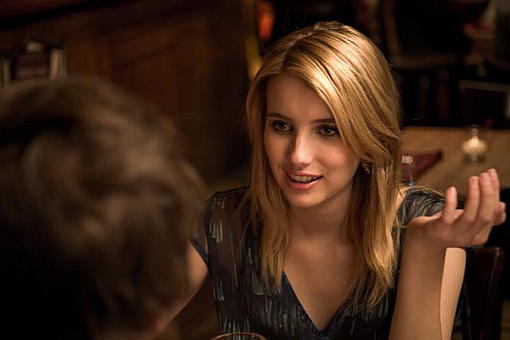By Ryan Mason · June 20, 2011

It could be worse. A lot worse. When other teen romance flicks tend to star Miley Cyrus or get adapted from Nicholas Sparks novels – or both, actually – the bar is pretty low for those filmmakers daring enough to give the world a heartfelt look at the perils of first love. I can’t say that I’ve had much desire to see any teen movies lately, ever since those loveable losers from the American Pie series became far too old to be playing even college-age kids anymore, having been usurped in the realm of adolescence by the Disney Channel clan of youngsters. Maybe that’s why I was surprisingly looking forward to seeing Freddie Highmore and Emma Roberts in The Art of Getting By, despite the chance of it taking itself way too seriously: because at least these were two actors who were balancing their typical tween stuff with actual movies.
Turns out that it works. I mean, well enough considering what it is we’re dealing with here. Highmore, of Charlie and the Chocolate Factory fame, plays George, a smart kid who has managed to avoid doing any and all schoolwork his entire senior year and now finds himself on the verge of not graduating. Naturally, the popular and pretty Sally, played by Roberts of Eric Roberts fame, finds herself intrigued by George after he takes the rap for her when a teacher catches them on the roof smoking. High school love hijinx ensues while George wrestles with whether or not life is worth wasting time on studying, papers, and math.
An easy comparison for George would be to Holden Caufield, but this isn’t the same cynical, pessimistic character you’d imagine from Salinger’s seminal novel. On the surface, sure, you have a too-smart-for-his-own-good, fatalist teenager who doesn’t see the point in things like going to class and doing homework when we all die alone eventually. But George is more innocent and loveable. He doesn’t look down on anyone else for going through the traditional hoops of learn, study, test, repeat; he just can’t muster up the energy to devote his precious few hours on this earth to those activities himself. In fact, for being consumed by the crushing, omnipresent knowledge that all of this just might not matter, George is a rather calm, confident, happy kid, full of life.
Likely that’s why Sally finds herself attached to him despite his loner status not usually jibing with her always-in-a-group popular clique. Thankfully, first-time writer/director Gavin Wiesen doesn’t let this head into She’s All That or even Mean Girls territory, the latter of which is excellent in its own right but not at all this movie. Sally’s popular group might not end up being George’s close friends, but they’re also not elitists who immediately look down upon him as some disgusting outsider unworthy of not only their friendship but of the slightest respect in general. In fact, they like George instantly. Because, what’s not to like?
For the most part, much of the movie is equally as likeable. Never going into the realm of overly memorable or moving, Wiesen’s perfectly comfortable hitting all those familiar notes with honesty and wide-eyed optimism. Perhaps it was the lack of cynicism that I found to be refreshing and appealing, which is surprising since usually I’m the one rolling my eyes quickly and often at movies like these. Or maybe it was just that Wiesen created characters and scenes that ring true more often than not, sticking to their personalities rather than molding around the plot in order to connect the narrative dots. That said, there were some issues. For one, these are high school seniors, no more than eighteen years old, yet they’re meeting up at local bars, drinking what appear to be bottles of beer. (The labels were conveniently out of sight so maybe it was just O’Doul’s?) Unless this was a period piece set in the 1970s and I just somehow missed it, no way these kids get into bars readily and easily even in the progressively minded Big Apple. The most egregious example of this is during New Year’s, George, Sally, and her friends all go out to a club where they proceed to take copious amounts of shots. It’s a glaring issue for me simply because it’s so easily remedied: have them meet in a coffee shop or throw a party at someone’s apartment – like at Sally’s friend Zoe’s place, whose parents can afford to pay for her own place, so she can go to school in the city. I get the need for new venues to stage these conversations between two teens; however, there needs to be some level of reality here, too.
On the other hand, it fits both George’s and Sally’s personalities to have them in a bar, in a way. They’re emotionally mature for their ages, acting more like twenty-somethings than teenagers, especially with matters of sex. And the whole existential crisis that practically paralyzes George from actually being a kid feels like it’s all coming from a thirty-something writer who is going through these issues and decides to imbue them in a high school senior rather than being all that organic to the character. Not to say that there aren’t ahead-of-their-times kids suffering through senior years out there; there are no rules saying that you have to be a certain age to feel the crushing burdens of life. And perhaps more teens are feeling this way than not. Either way, it’s refreshing to see teen life portrayed with at least some depth rather than the typical bubble gum, vapid fantasy approach we’re used to. This isn’t an art film, but it reaches higher than most teen fare. And more often than not, it actually gets there.